Our Top Tips for New RVers with Dogs
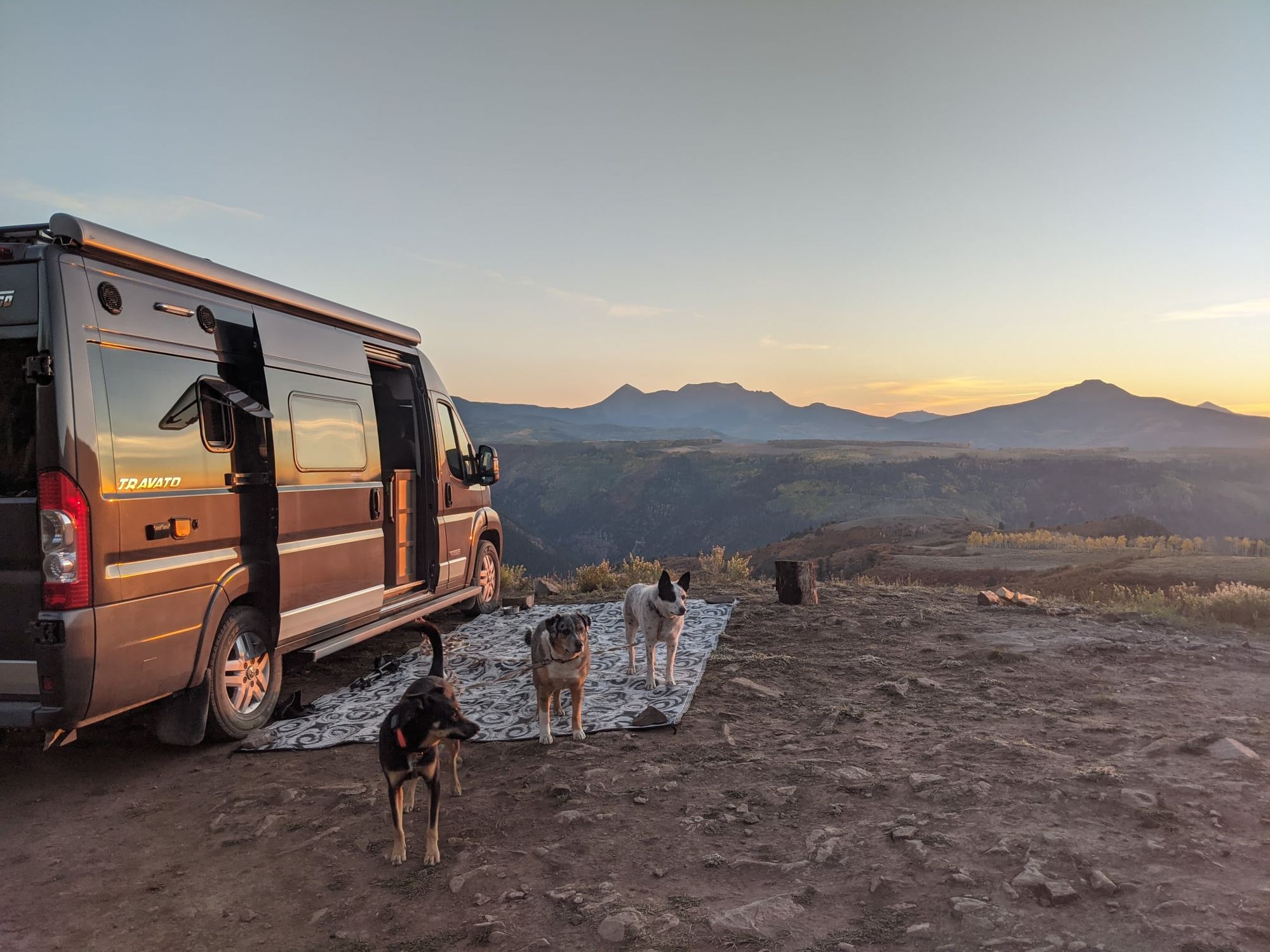
New to RVing? We once were too! Like, REALLY new. We went from never RVing, to full-timing in a class A with two dogs.
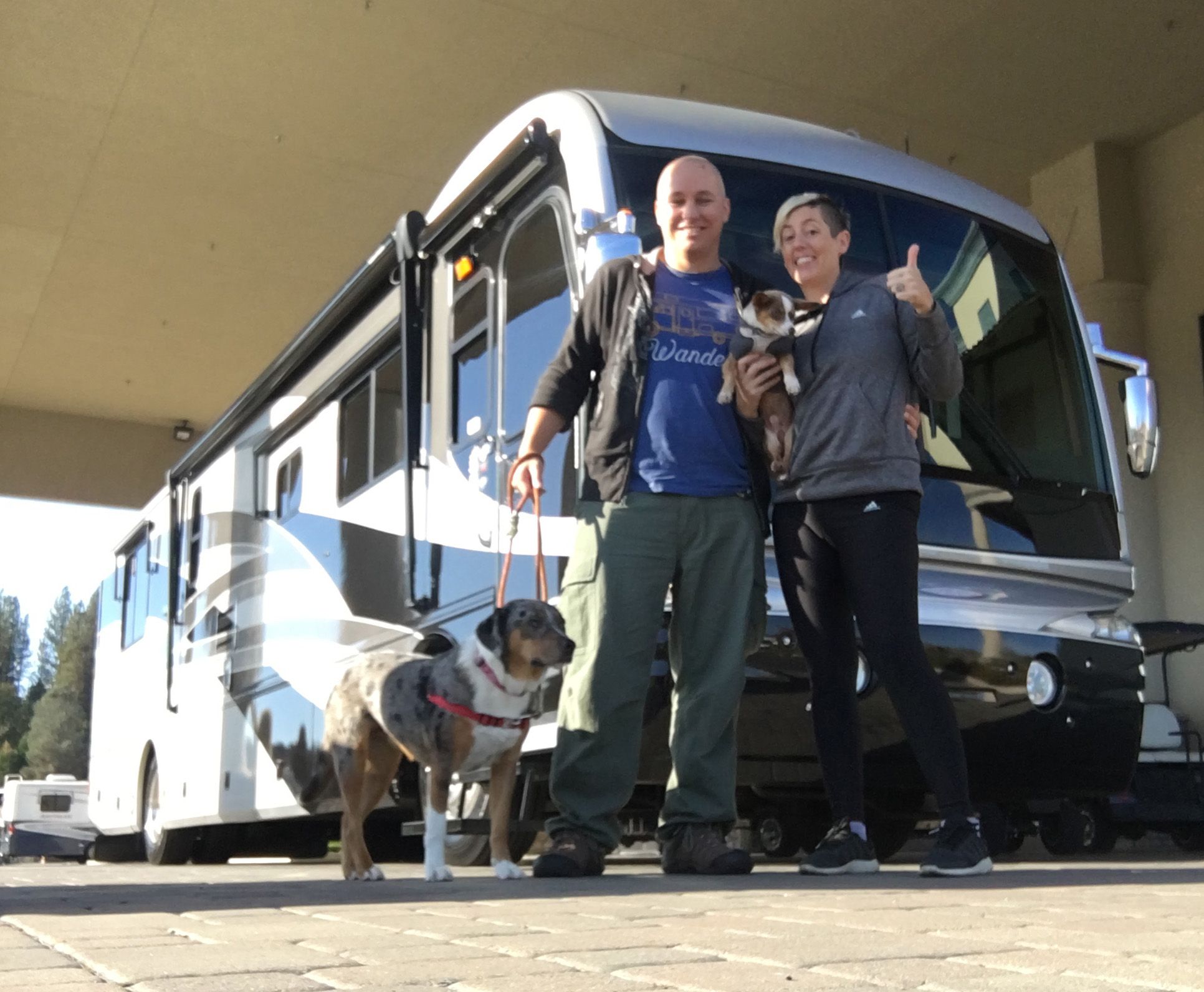
Going from zero to full-timing can be intimidating but don't let that stop you. We've compiled a list of the top things we've learned over the past 5+ years of full-time and part-time RV life with dogs, in both a class A and a van, in the hopes that it helps others get started.
Think About What Kind of RVer You Want to Be
One of the most important things you can do before you begin RVing is to put some thought into what type of RV lifestyle you want to live. Does your dream life involve full-hookup RV parks in prime locations, with lots of new friends and amenities, your AC running, and long, hot showers? Or maybe you think conserving resources while boondocking and being alone out in nature sounds ideal?
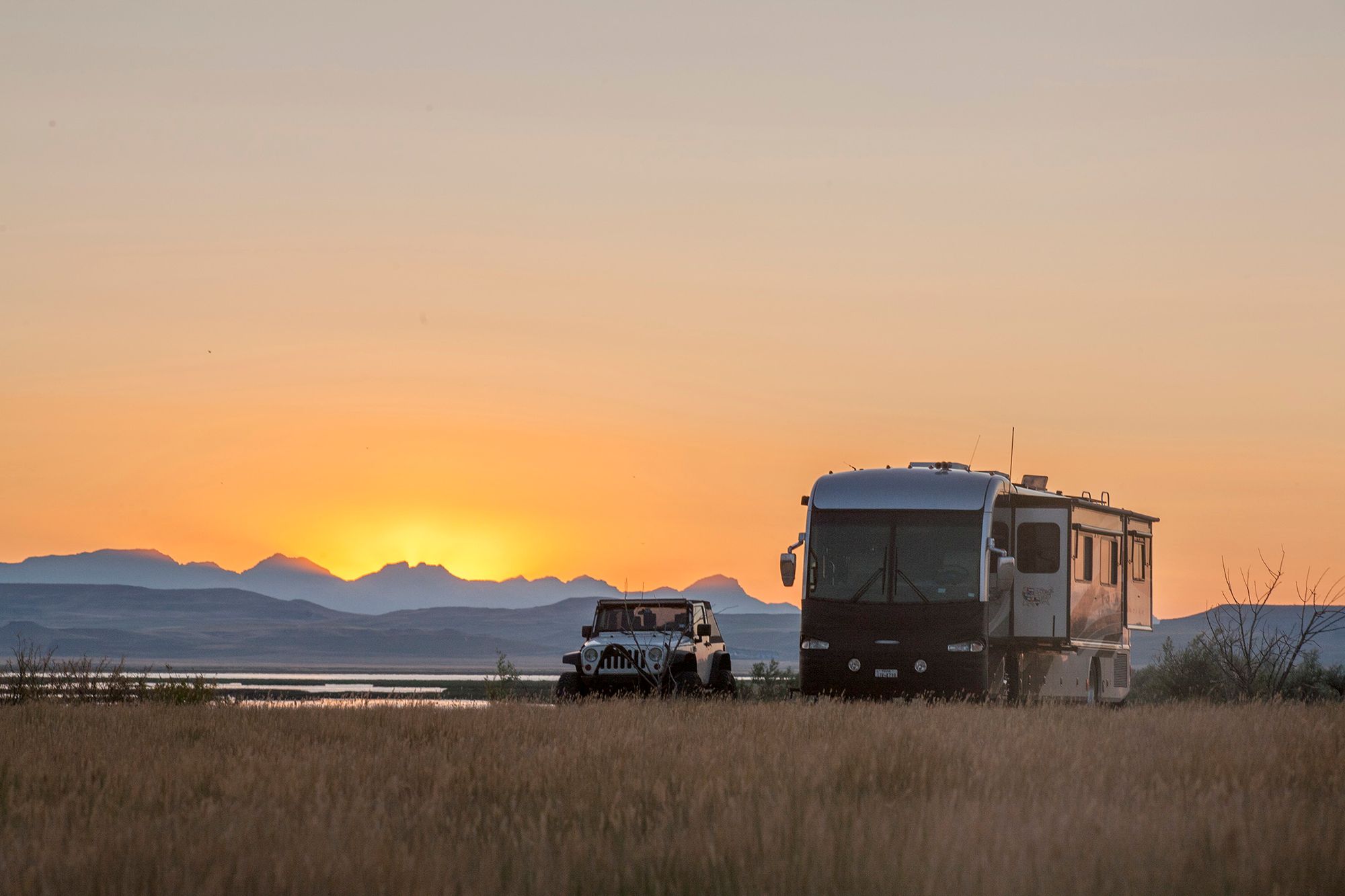
Thinking this through before you buy an RV will help ensure you buy the right rig for you and your dog(s). If you want to stay in RV parks you'll need to keep in mind that some parks have strict rules around breed restrictions, maximums on the number of dogs per RV, if dogs can be left unattended, and even age restrictions on rigs. On the flip side, boondocking means you'll need to be more restrictive when it comes to water and tank use, and you'll probably need to plan your route around favorable temps so your dog doesn't get too hot or cold in the RV without hookups.
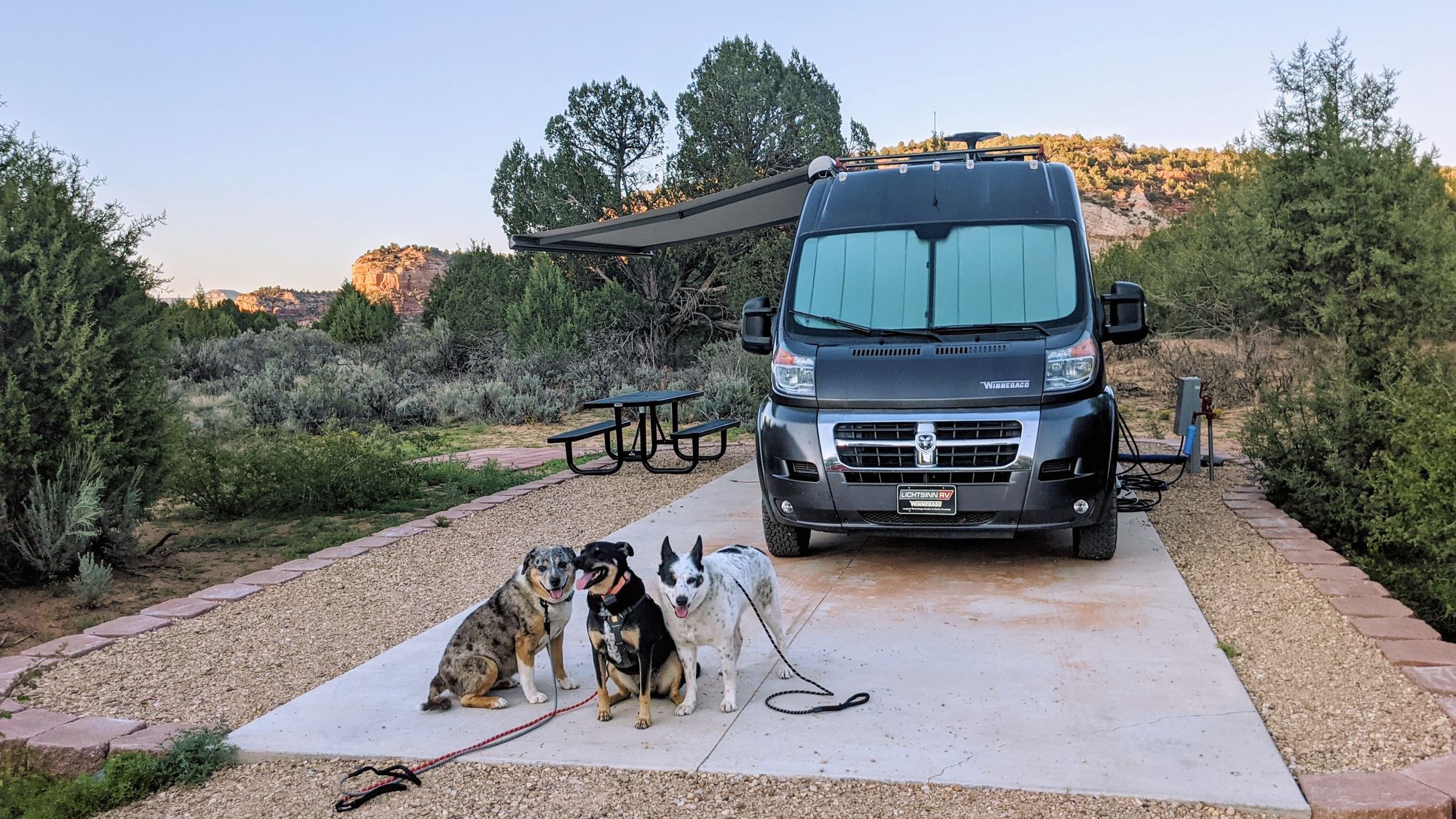
Another thing that will need to factor into your decision is if you'll have an additional vehicle you either tow (referred to as a toad) or that someone in your party drives separately. For our first few months of RVing, we didn't have a toad — we only had the 38' motorhome which meant we had to take it everywhere and didn't have a daily driver for errands or exploration. This meant we stayed in RV parks more, just for convenience and to be within cities that were walkable and had rideshare services.
Research and Choose the Best RV for You
Once you've decided on what type of RVer you plan to be, you'll need to start researching rigs. Of course, your preferences can change once you're actually on the road but a bit of prep will make a big difference. We did many months of research and YouTube watching of full-time RVers who shared their real-life experiences (think Gone with the Wynns before they transitioned to sailing) before we decided that a class A would work best for us. All of that research paid off, and although at times we may have wished for a smaller rig, the big class A with a Jeep in tow was perfect for us (2 adults who need space to work and 2 large-ish dogs).
And when we transitioned from full-time to part-time RVing, we sold our class A and Jeep and opted for a van instead to make impromptu weekend trips easier. The dogs (we now have 3) can cope with less space for a few days, but we wouldn't full-time in a van with this many big dogs.
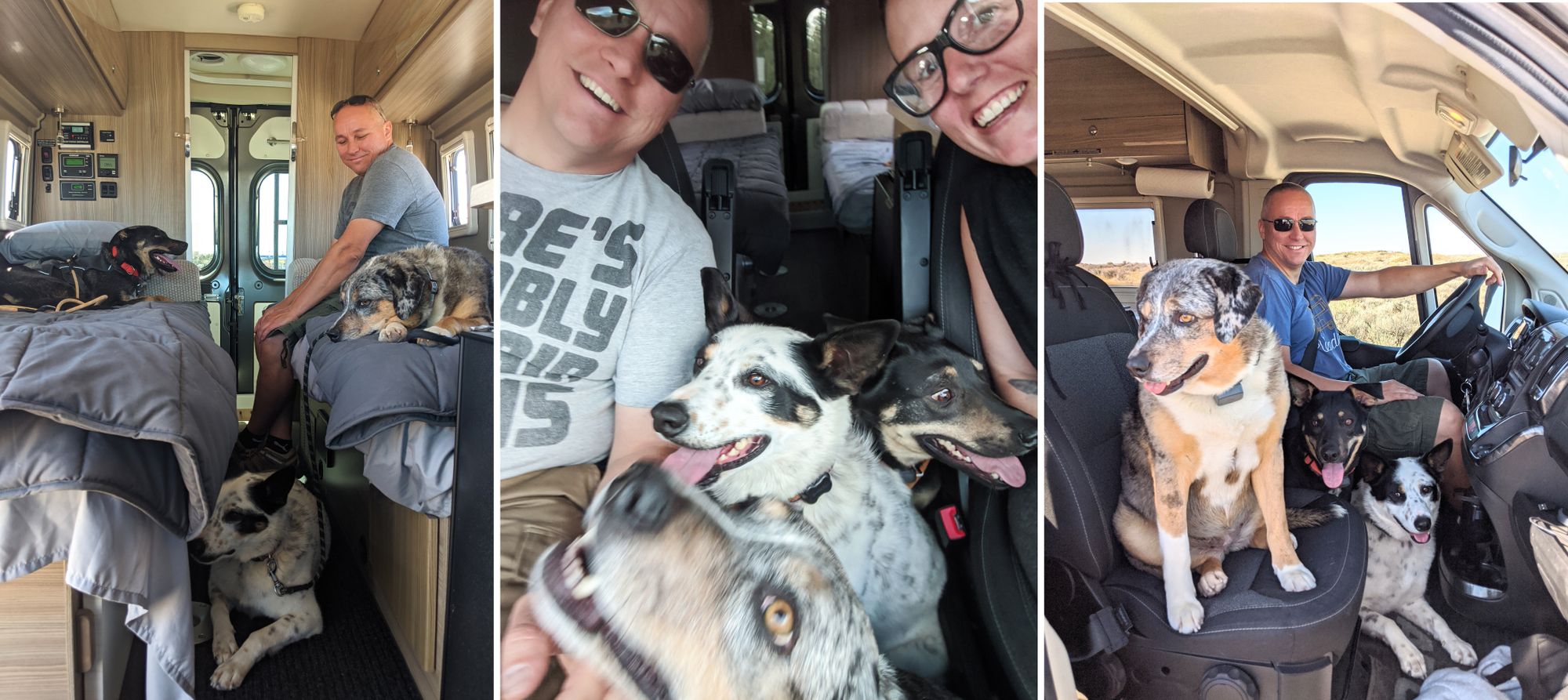
Most RVers we know have had multiple rigs. It's okay! Especially if you've never RVed before, it can be hard to know what will work for you and your dogs, until you're actually using it daily.
If you plan to travel with dog(s), ask yourself questions like these: If I have multiple dogs, do they get along well enough to stay in the RV alone together, or do they need to be separated in some way? Can everyone in my party fit comfortably inside for a long rainy day? Do I want a crate for my dog in the RV? If so, where would it fit? Do I want my dog secured via a seatbelt — if so, where? Is AC important to me? Do I want to invest in a good solar system to make off-grid RVing more comfortable? How long will my driving days be? Do I want to make impromptu stops during my travel days — including for dog pee breaks — and will my vehicle(s) fit at a random parking spot? Will I want four-wheel drive and/or high clearance for my explorations? (in my van or in my toad; generally, the more capable vans have less space inside).
Train Your Dog for RV Basics
If you plan to RV in the future, there's training you can do ahead of time to help your dog succeed on the road. Basic manners will always be helpful, but the command we found the most helpful as RVers was "wait"/"okay". More on that here — but essentially our dogs know they're not allowed out of the RV (even with the door open) until they're given the "okay" command. This is incredibly important for safety reasons since we are often unloading the dogs at the side of a busy road and don't want them bolting out the door.
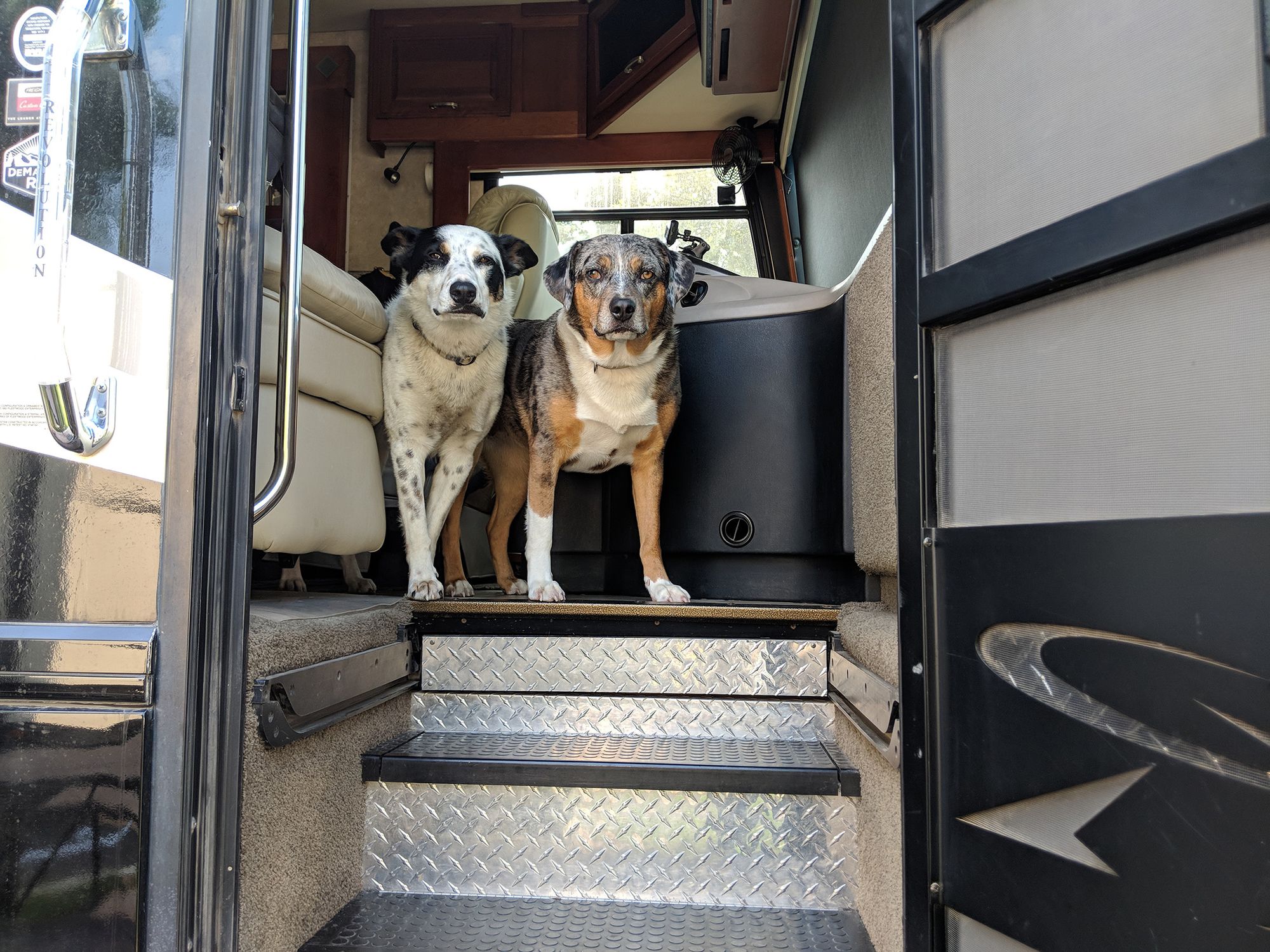
If you plan to have a crate in your RV for your dog, getting them used to it ahead of time at home is best. Our dog Mushy had some anxiety during driving days, and the crate was his safe spot. If we left the two dogs unattended, it also ensured that they wouldn't get in a fight when we were out (rare, but better safe than sorry). At home, you can feed your dog their meals in the crate, move it into a commonly used room and put a comfy bed in it, so the dog sees it as a favorable spot, not a punishment.
If your dog isn't used to being in a vehicle, taking them on short trips to fun destinations will help transition them to a lifestyle that includes a lot of driving. Remember to have enough ventilation reaching the back seat so the dog never feels like your car is a sauna. This is also the time to practice car basics like "stay on the back seat" (if desired), "no roaming near the gas pedal" (we had a chihuahua that was guilty of this), and "dogs are not allowed to change gears" (looking at you, Delta).
Separation anxiety can be common in dogs and usually leads to unfavorable behaviors which can be very problematic in an RV. Plus, if you are staying in RV parks often, a barking dog left alone is a sure way for you to get a phone call from the office! Best to work on any issues like this ahead of time, before beginning RV life.
Don't Skip State Parks, National Forests, BLM, etc.
You've probably heard that National Parks, on average, tend to be pretty restrictive to pets. What we learned early on during our time on the road is not to overlook what's outside or nearby the park. Areas like state parks, forest service, or BLM land tend to be very dog friendly. One of our favorite experiences so far has been in Utah, boondocking in the Dixie National Forest, hiking with the dogs in nearby Red Canyon, and doing dogless day trips into Bryce Canyon National Park. Another Utah gem that comes to mind is Corona Arch, a dog-friendly alternative to Arches National Park.
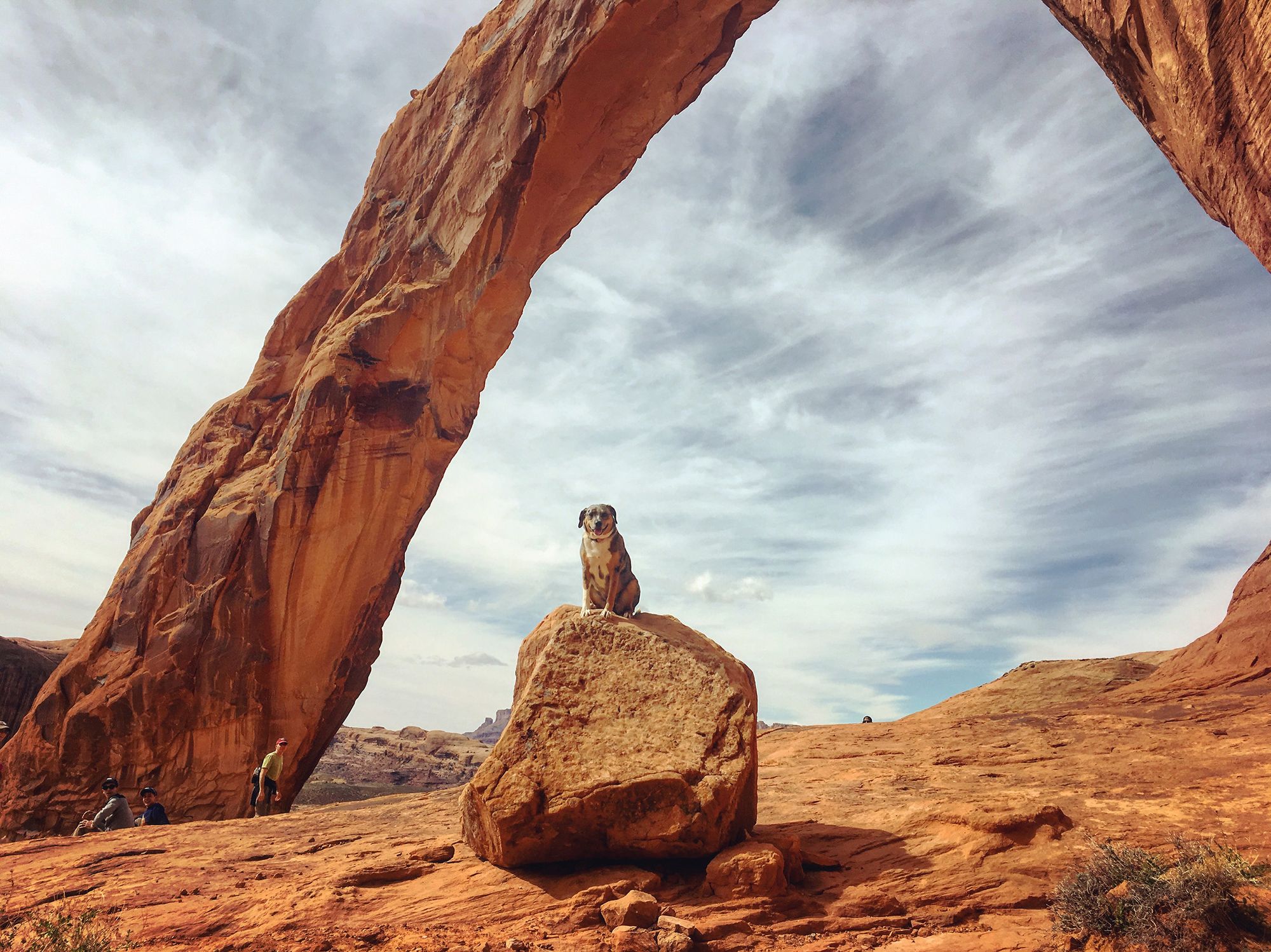
Know How to Keep Your Dog Safe in the RV
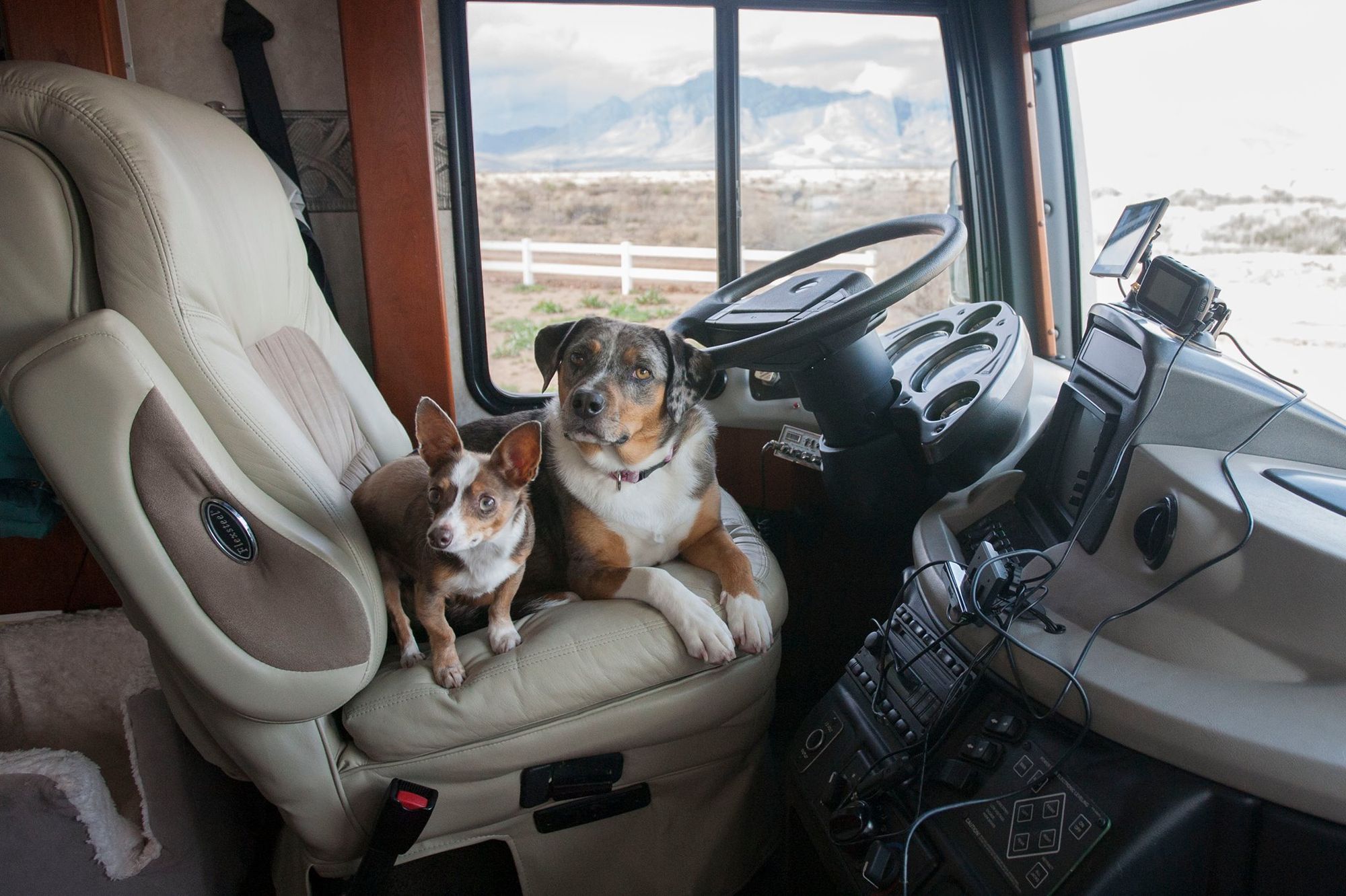
The biggest question we've been asked when it comes to dog safety in an RV is, "don't you worry about leaving your dog alone in the RV when it's a hot day?" and our personal answer is — we don't leave them alone if it's hot. As RVers who primarily boondock and seek out dog-friendly adventures, we try to take the dogs with us as much as we can. If that means skipping a national park that doesn't allow dogs, we skip. Or we take turns sightseeing while the other person stays with the dogs. We know that doesn't work for everyone, so there are RV temperature monitoring devices on the market, but keep in mind those rely on getting in touch with you via a cell signal. During our full-time life, if we did leave the dogs unattended on what was to be a warm day, we made sure to do whatever we had to do early in the day before the temperature rose. We also have homemade laminated signs for our windows that we put up when heading out, that let people know there are 2 dogs in the RV, and have both our cell numbers to call in case of emergency. This also helps emergency workers know to evacuate the pets if there's for example a forest fire.
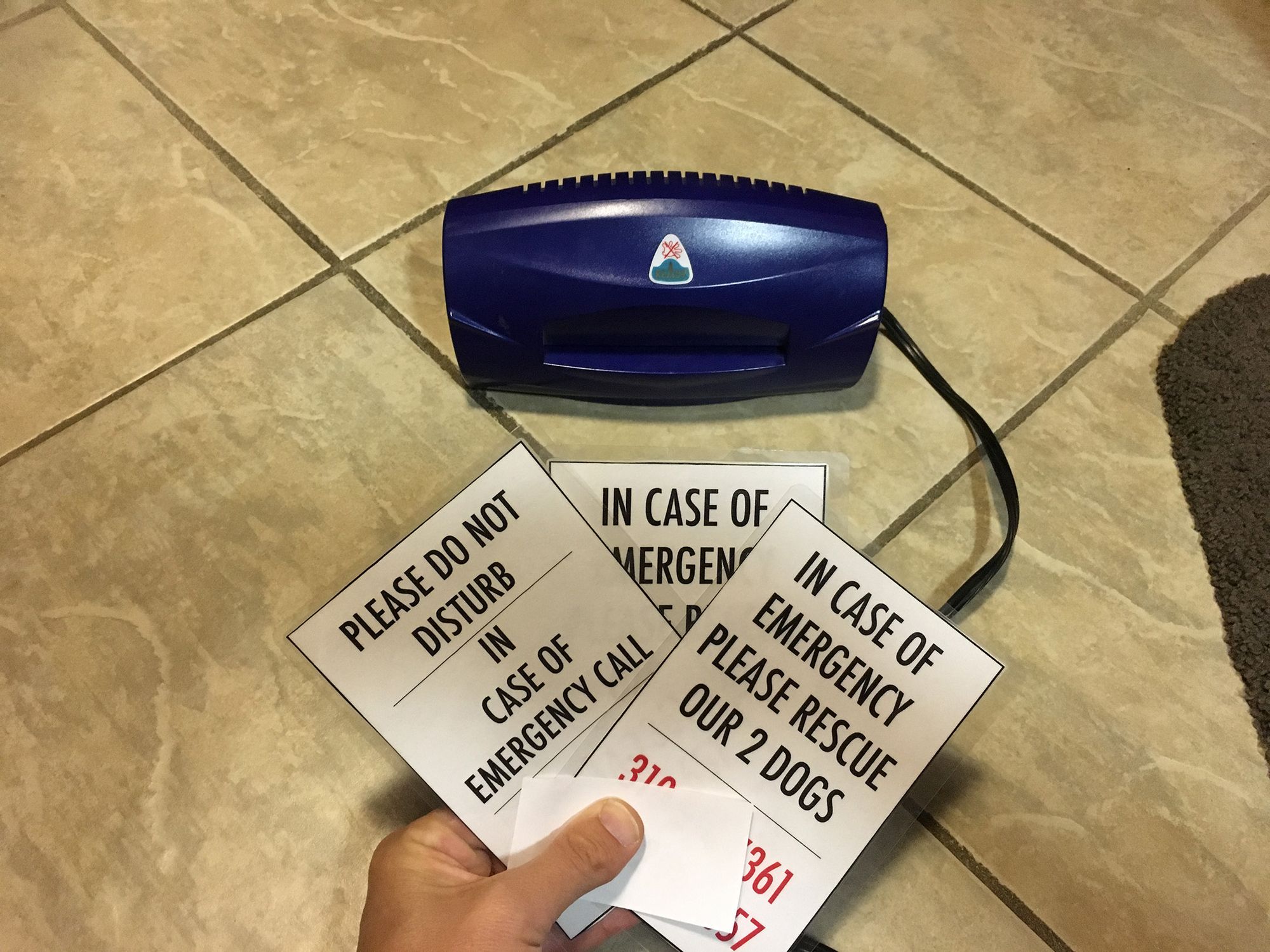
Our class A actually had enough battery power to run the AC, but recharging afterward by solar power took a very long time. Occasionally we would book a full-hookup RV site just to run the AC, and pair that with a temperature monitoring device (in the event that the power went out at the park). Some folks will find a Rover or Wag sitter or use local boarding/daycare facilities. Some national parks/monuments have on-site kennels too. We love RVing with pet-having friends so that we can take turns checking in on our friends' pets while they're out, and vice versa.
Learn How to Keep Your Dog Nature Safe
If your dog lives in an urban area and isn't out in nature a lot, chances are, they're not vaccinated against things like leptospirosis, or a rattlesnake bite. There are things you'll need to research and consider to protect your pet, depending on where you plan to travel. Your vet can help you with this, but while RVing the western part of the U.S., our Los Angeles/San Francisco dogs were in the midst of venomous snakes, bears, toxic blue-green algae, cacti, scorpions, tarantulas, plague-ridden chipmunks, coyotes, jagged rocky ground, abrasive lava rocks, and more. Not all of these resulted in bad outcomes for the dogs, but that was due to the fact that we researched possible regional dangers, and took the necessary precautions. Again, planning ahead here is key. Research potential dangers of the areas you're visiting so you can be knowledgeable on how to protect your pet, and buy any supplies you may need (for example: bear spray, booties, etc.).
Another adjustment that an urban dog may need is what we call "adventure paws". We're reminded of this whenever we take a dog friend or new adoptee on their first hike. Dog paws that have only walked in houses, on roads, and on grass start to hurt easily in "raw nature", including simply rocky desert ground, and tend to pick up thorny weed plant stickers of many kinds. Dog paws that have lived an adventurous life for a year or so are much more robust, and the pads have thickened enough to pick up fewer stickers. And getting used to long nature walks builds up stamina, too.
Meet With Your Vet Well in Advance
Speaking of vets, make sure you reach out to your vet well ahead of time before you start RVing. If there are vaccines they suggest your dog receive, know that some, like the rattlesnake "vaccine", are given in two parts, several weeks apart. You probably also want to talk about dental cleanings, microchip & its contact info, and medication refills on the road. Best to get that ball rolling so you're not scrambling last minute.
Take the time to put all of your dogs' records on a USB stick, and a backup in the cloud so you'll have them no matter where you go. If you like having paper copies, you could have them in a small binder too, but don't rely on those being your only set.
If you like consistency, you may want to look into some of the national vet chains, if you think you'll be traveling in areas where they have locations.
And of course, you'll want to expect the unexpected. While full-timing, we generally moved to a new area every 7-14 days. As part of our trip planning, we researched what vets were in that area and which ones offered after-hours emergency visits. Bonus points for calling their office ahead of time to confirm everything so you know exactly what to do in the event of a pet emergency.
We could go on and on on this topic! Check out our more in-depth post for all our tips on getting your pets RV ready.
Prep Pets for Various Weather
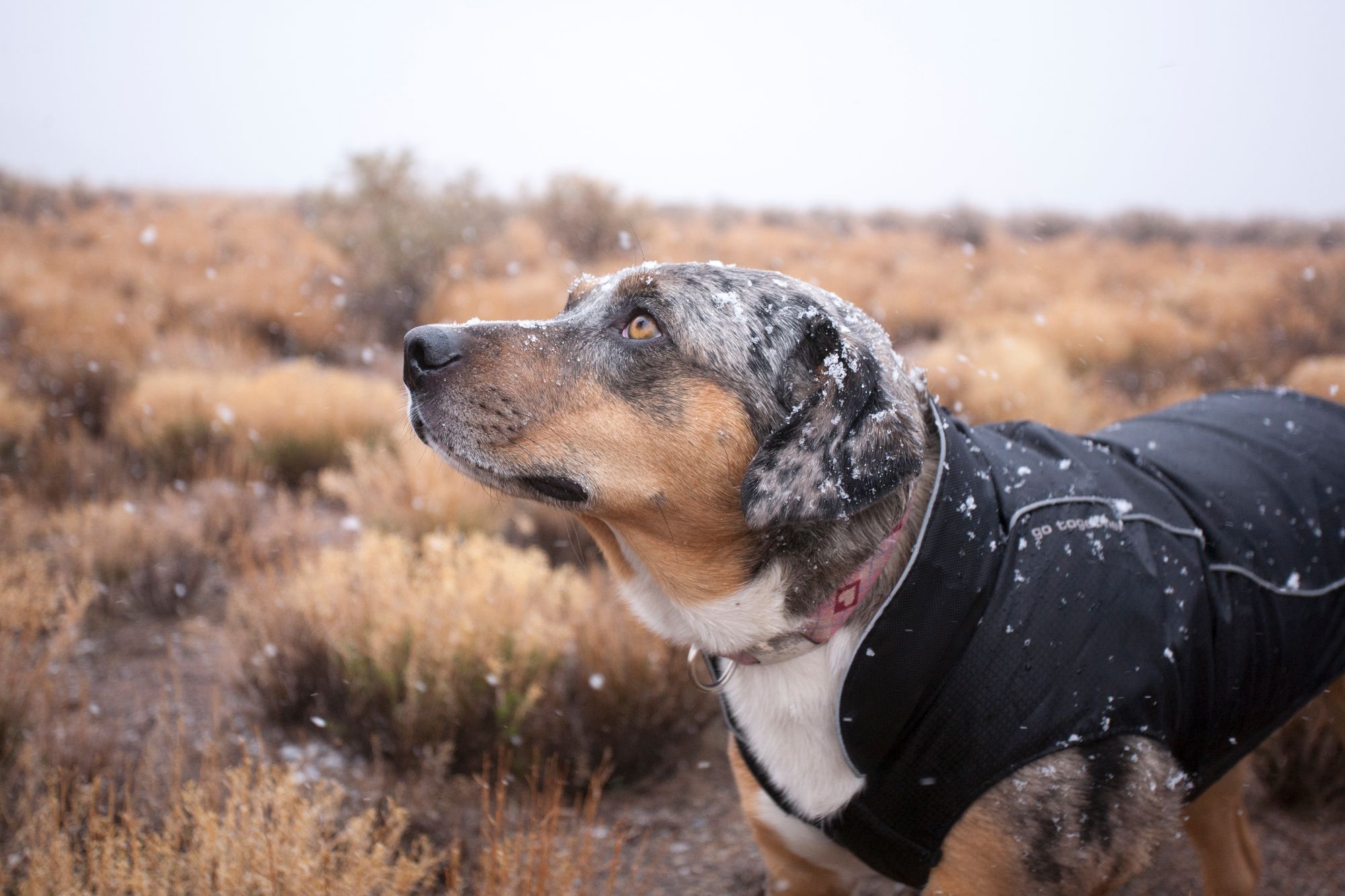
Generally, RVers try to "follow the weather" so they don't have to deal with extreme heat or cold. It's best to be prepared, so even if your dog doesn't use a sweater or raincoat at home, having one in the RV will likely come in handy one day. You can also never have enough towels on hand for muddy dogs! We like these quick-drying low-profile towels that store easily.
Consider Dogs When Route Planning
We've learned that long travel days and dogs don't mix. When we were full-timing we stuck with the 2/2/2 rule. Drive under 200 miles, arrive by 2 pm, and stay at least 2 nights. That allows you to set up your RV in the daylight, and be well rested. Plus, it shouldn't stress your dog out.
If you must have a long driving day, try giving your dog some exercise in the morning before you get in the RV, so they are excited to rest and relax during the drive. We also like to take a nice long lunch break where the dogs can take a good walk or visit a dog park.
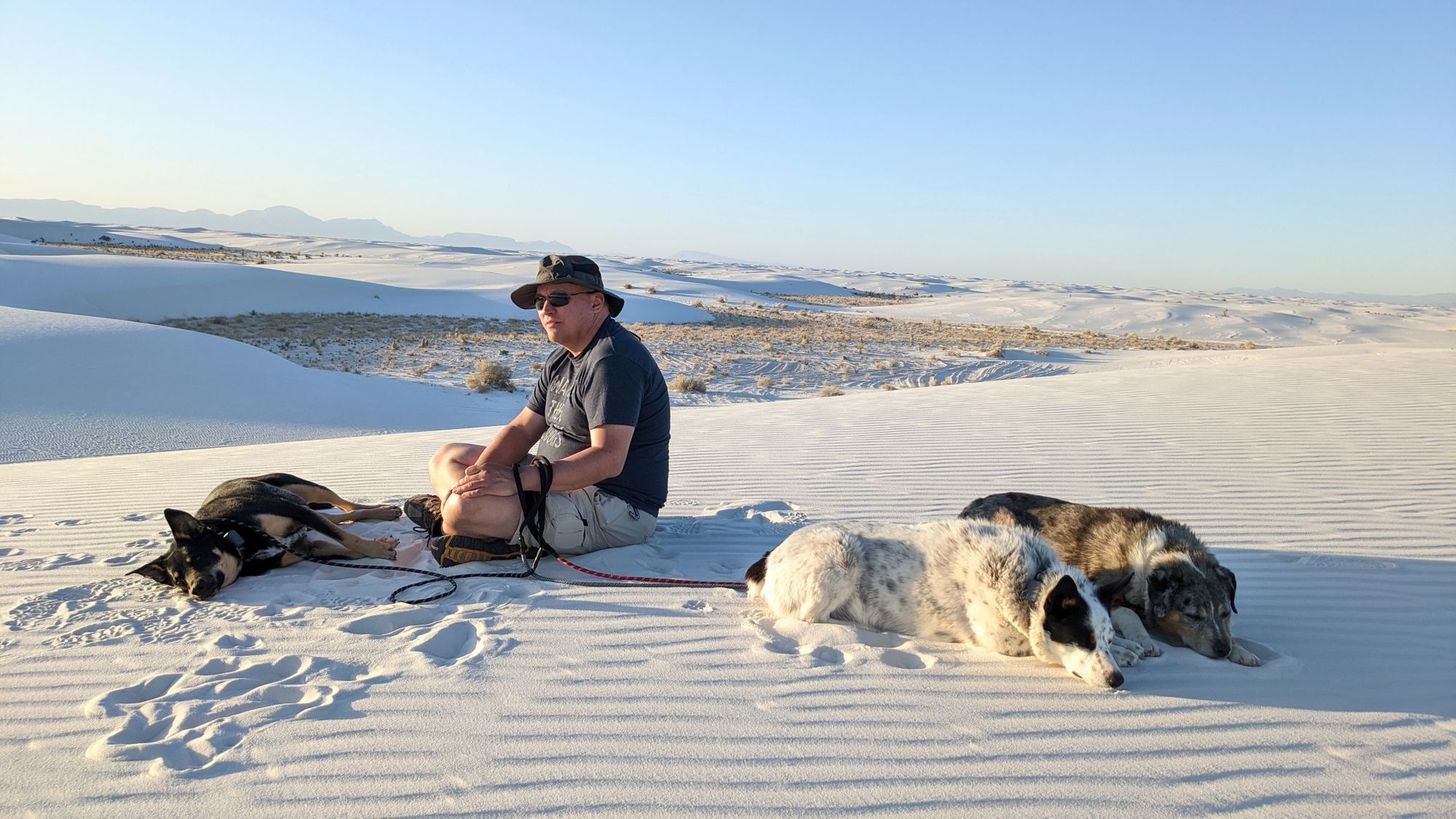
Know Where You Are
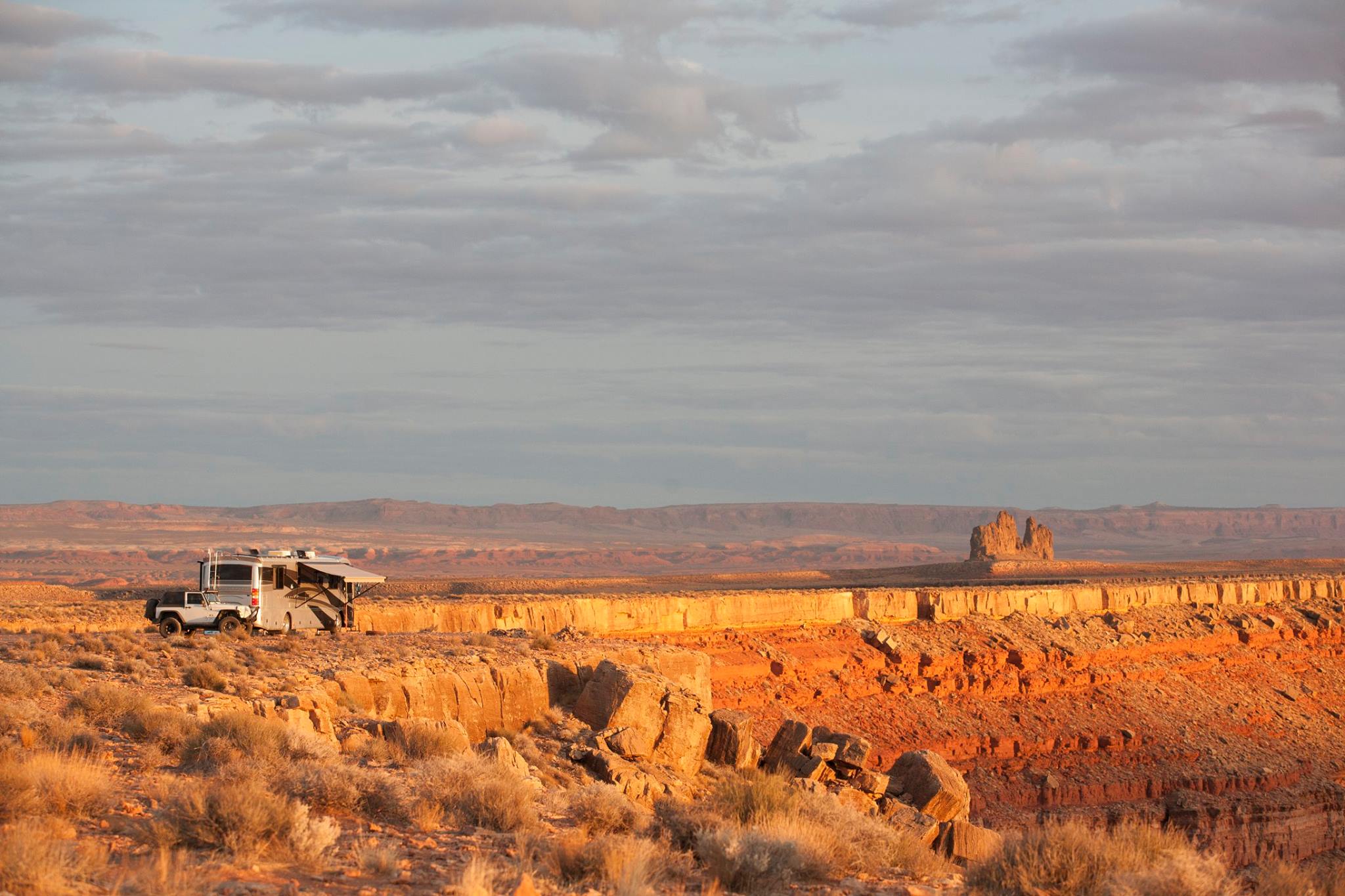
I forget where we learned this tidbit from, but it became standard practice for us as full-time RVers. Any time we arrived somewhere new, we used our dry-erase board in the RV to note down our exact location should we need to call emergency services. This was especially crucial if boondocking when there's no real address. For example: "4.5 miles down Forest Road 123, just past mile marker 34 on the south side of Highway 42". Remember two things: it's not enough that one person in a group knows how to describe their location, as they could be the one that is hurt; and if it's a real emergency, you will be panicking, what you want is tools to keep that panic from escalating.
We also updated our dry-erase board with the local emergency vet's phone number. Bonus points for putting these numbers in your cell phone too! We also shared a Google Calendar with our travel plans with two trusted people.
Consider Purchasing Dog-Related RV Products
Over the years, we've come to love and appreciate some products that help make RV life with dogs easier and/or safer. Here are a few of our favorites:
Slings — For our large dogs, we purchased a Ruff Rescue Gear sling. We put this in a backpack when going on long hikes. We have 3 dogs now, and they are all over 60 pounds each. If one gets hurt, this sling makes carrying them out much easier. For our 10-pound blind chihuahua, we used a sling by 4 Lazy Legs.
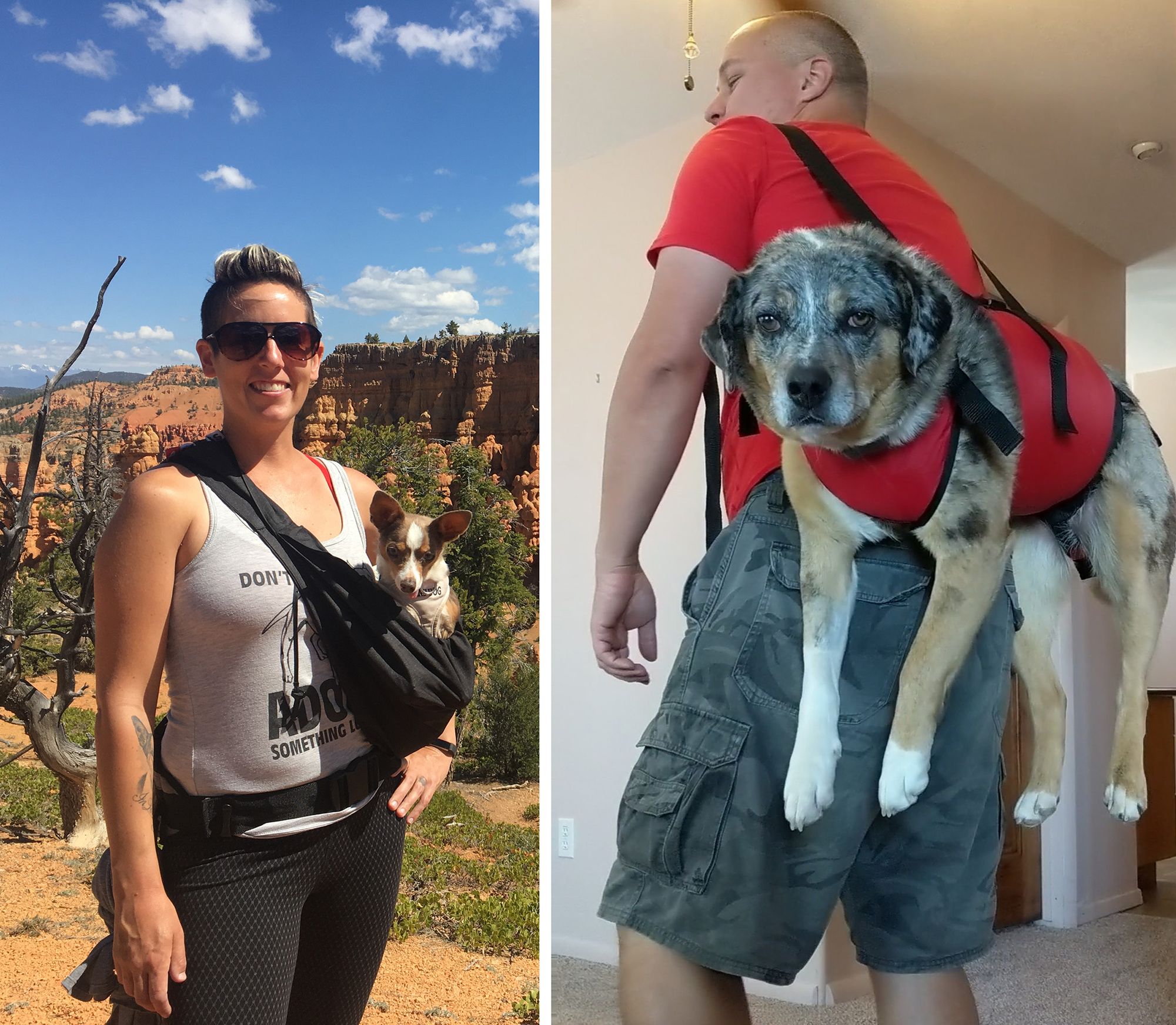
GPS Trackers — There are lots of products on the market now. You should consider getting one, especially if your dog has a high prey drive. We use Whistle (requires an AT&T signal and monthly plan payment). If you know you'll stay in populated areas, you may want to go a more affordable route with an Apple AirTag or Tile, but remember that those can only track a dog that's near someone's iPhone or Tile network, and are not useful deeper in nature. AirTags aren't made for dogs, but people use them on collars with third-party holders and they'll essentially alert you when your dog passes another Apple user. And alternatively, if you want something that doesn't need even a cell signal but works on a direct radio link, you can look at the more expensive hunting dog–type products.
Reflective Collars with Embroidered Name/Phone Number — We like the Orvis brand reflective collars. It's amazing how reflective these are and they hold up for about 2–3 years of everyday use.
Blinky lights — These are helpful if you're boondocking and letting your dog out at night. We like this very bright collar light meant for hunting dogs. Cheaper products exist but aren't all that useful once your dog goes behind a bush; this one is bright enough to light up nearby trees.
Booties — This product category seems to have mostly no-name manufacturers that come and go. Some of the ones we've used are My Busy Dog and QUMY, and you'll see lots of similar products on Amazon. Read their instructions on measuring paw sizes and you'll be fine. They're affordable and stay on relatively well. Mushy put them to the ultimate test at the Bonneville Salt Flats in Utah with his super zoomies.
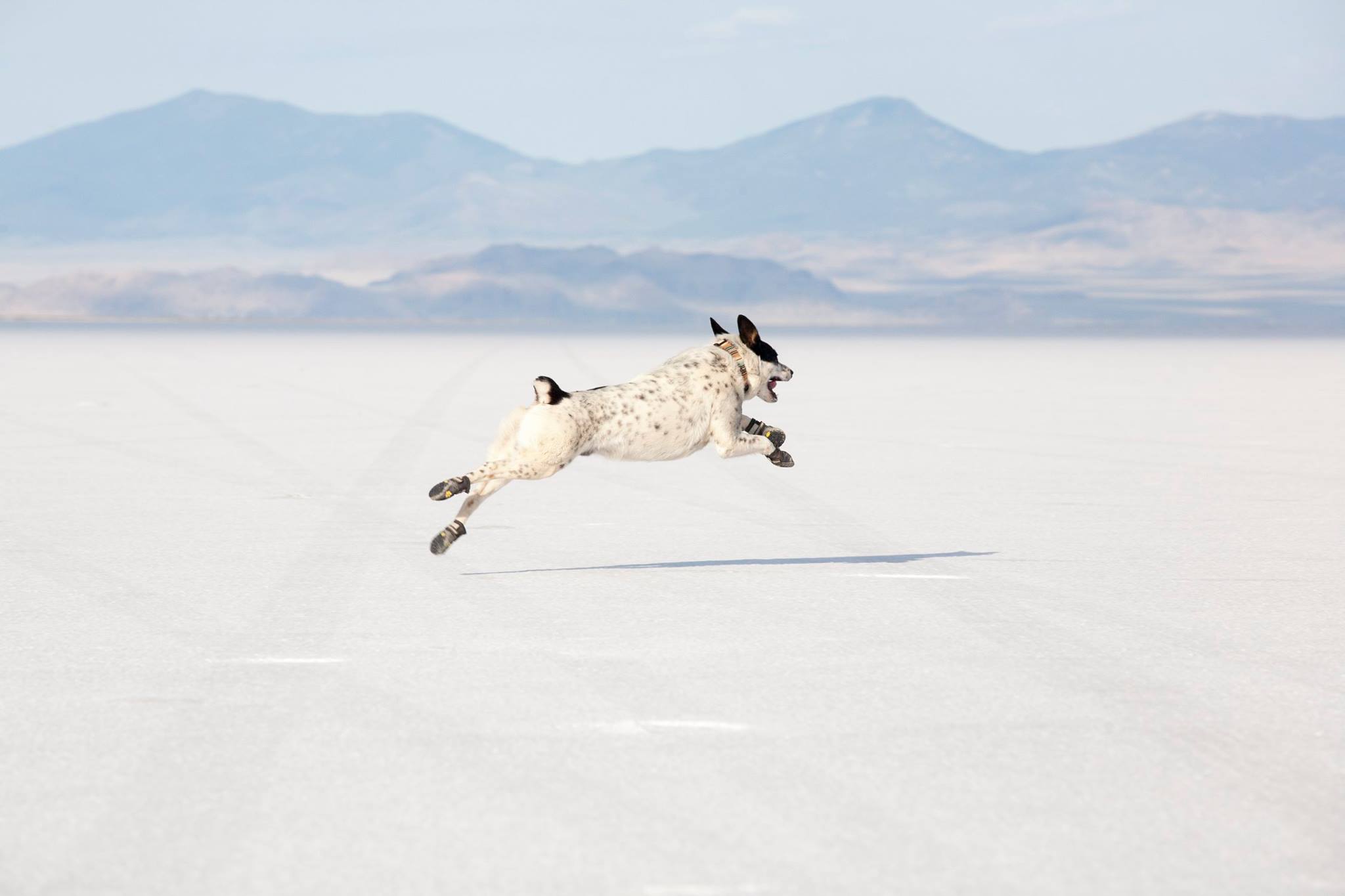
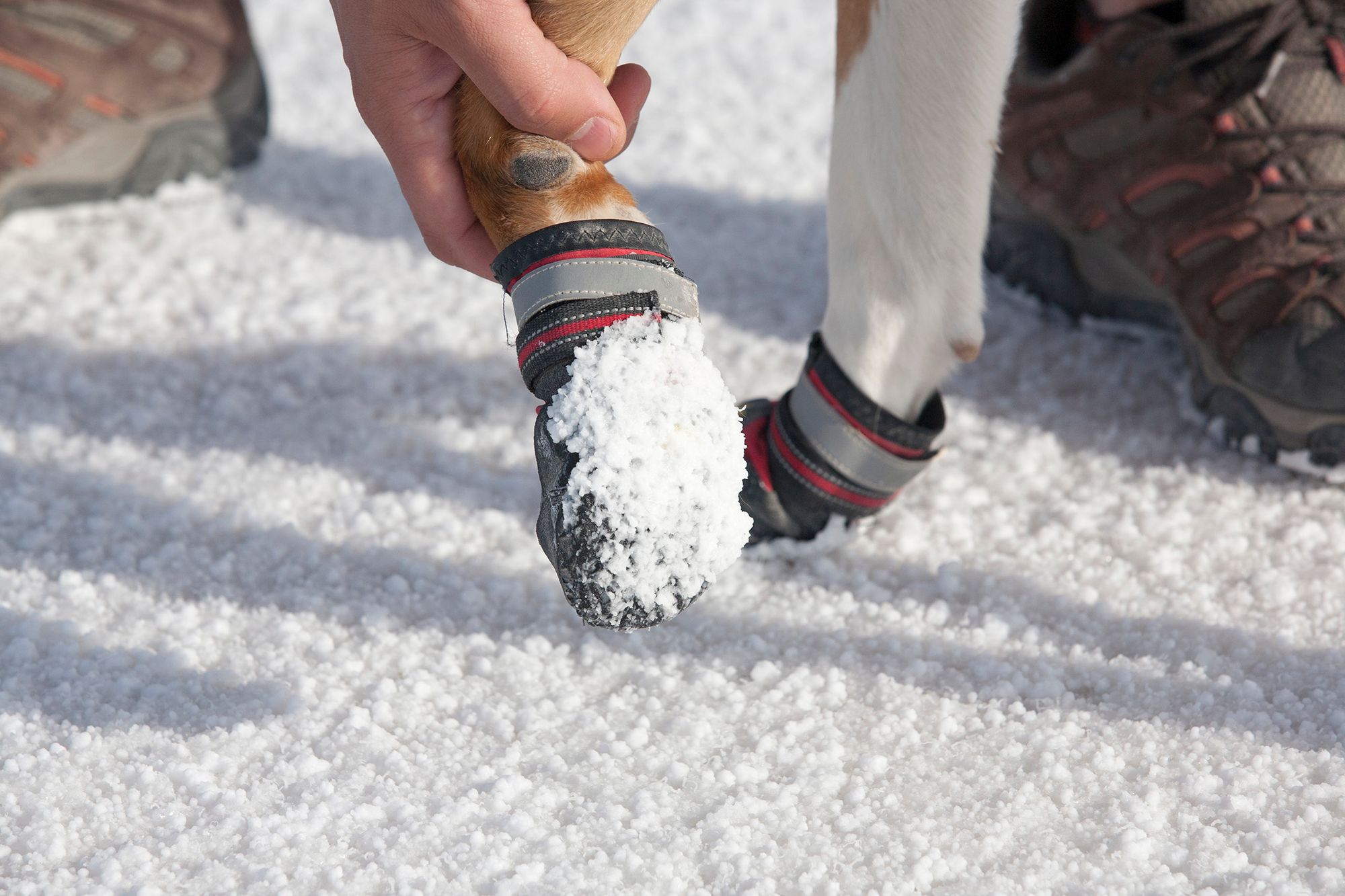
There are lots of solutions for how to give dogs access to the outdoors when you're parked. Some folks like bringing fencing or pens with them, but that takes up precious space. For us, we've found that these metal-core tie-out cables work great and don't tangle easily. We attach them to the mounting brackets of our van's running board.
With three big dogs, we have the potential to have to haul a lot of poop bags until we find a trash can. For our Jeep spare tire, we liked the Trasharoo and for our van ladder (where a Trasharoo would block the license plate) we use two of these pouches.
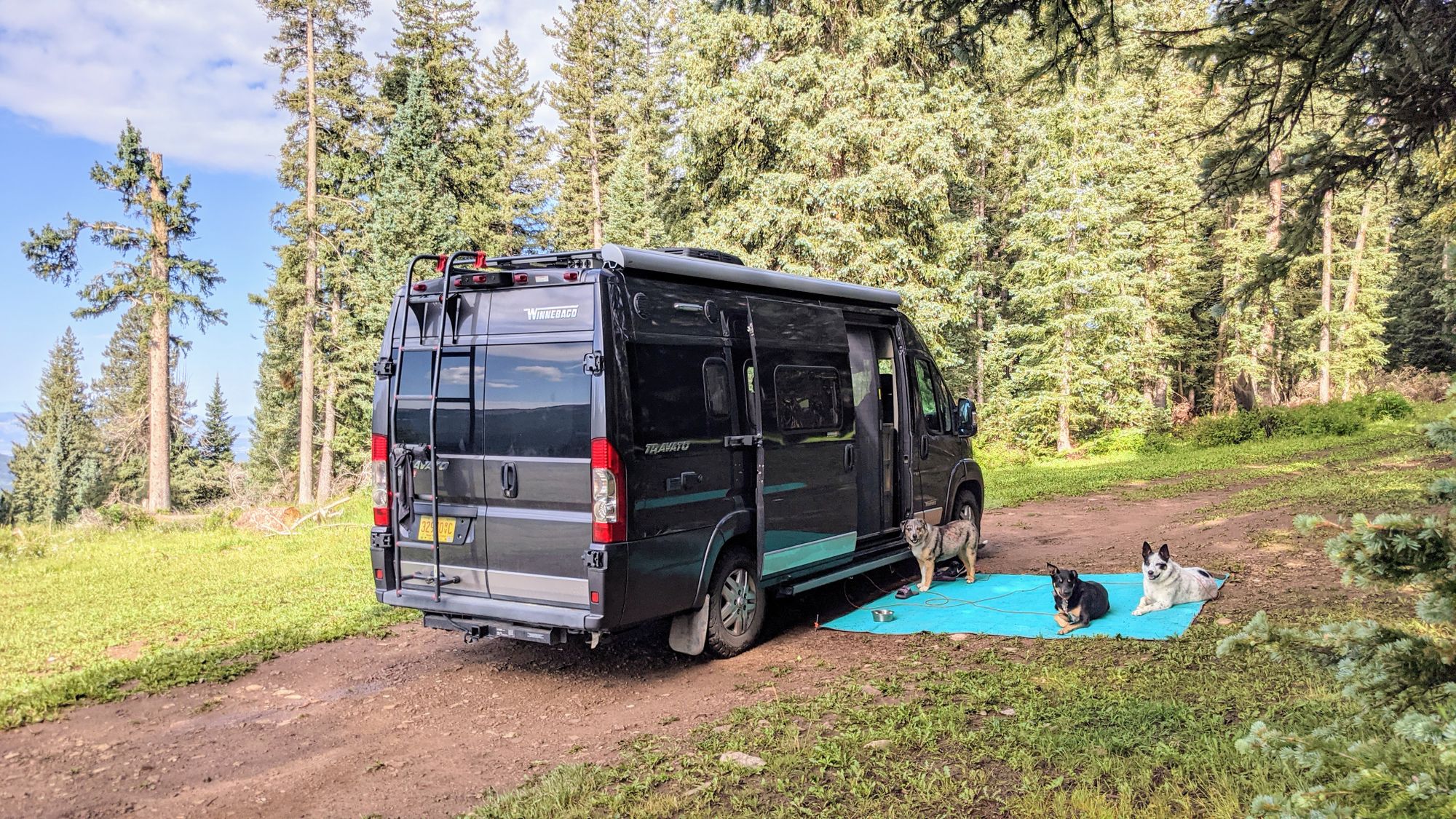
A large outdoor rug has been essential for us. The dogs lay on it when outdoors, which helps to keep them clean. It also helps grab dirt/dust/sand from paws before they enter the RV. When we had the big class A, we used a large 16x8ft Camco rug. For the van, we downsized and use an 8x8ft CGear Sand-Free mat.
To see a larger full list of products we like, check out this post.

RVing with dogs does complicate things, but if you're willing to put in the effort there are lots of solutions, you just need to find the ones that work best for you and your pet.
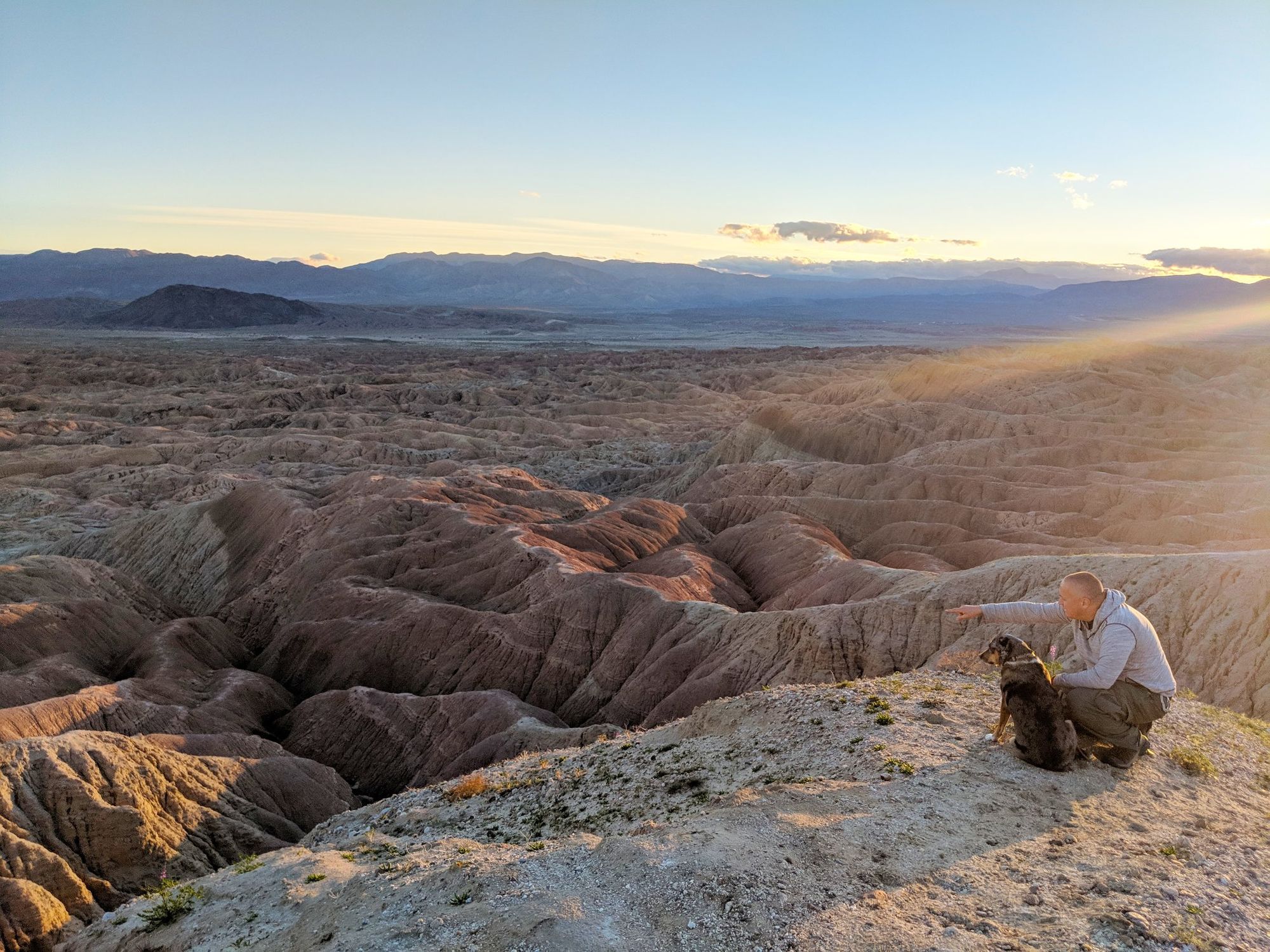
This post originally appeared on: https://fmcadventure.com/2023/01/09/our-top-tips-for-new-rvers-with-dogs/
Shopping links are affiliate links and help us pay for this site. Our opinions are our own, and not paid for.
